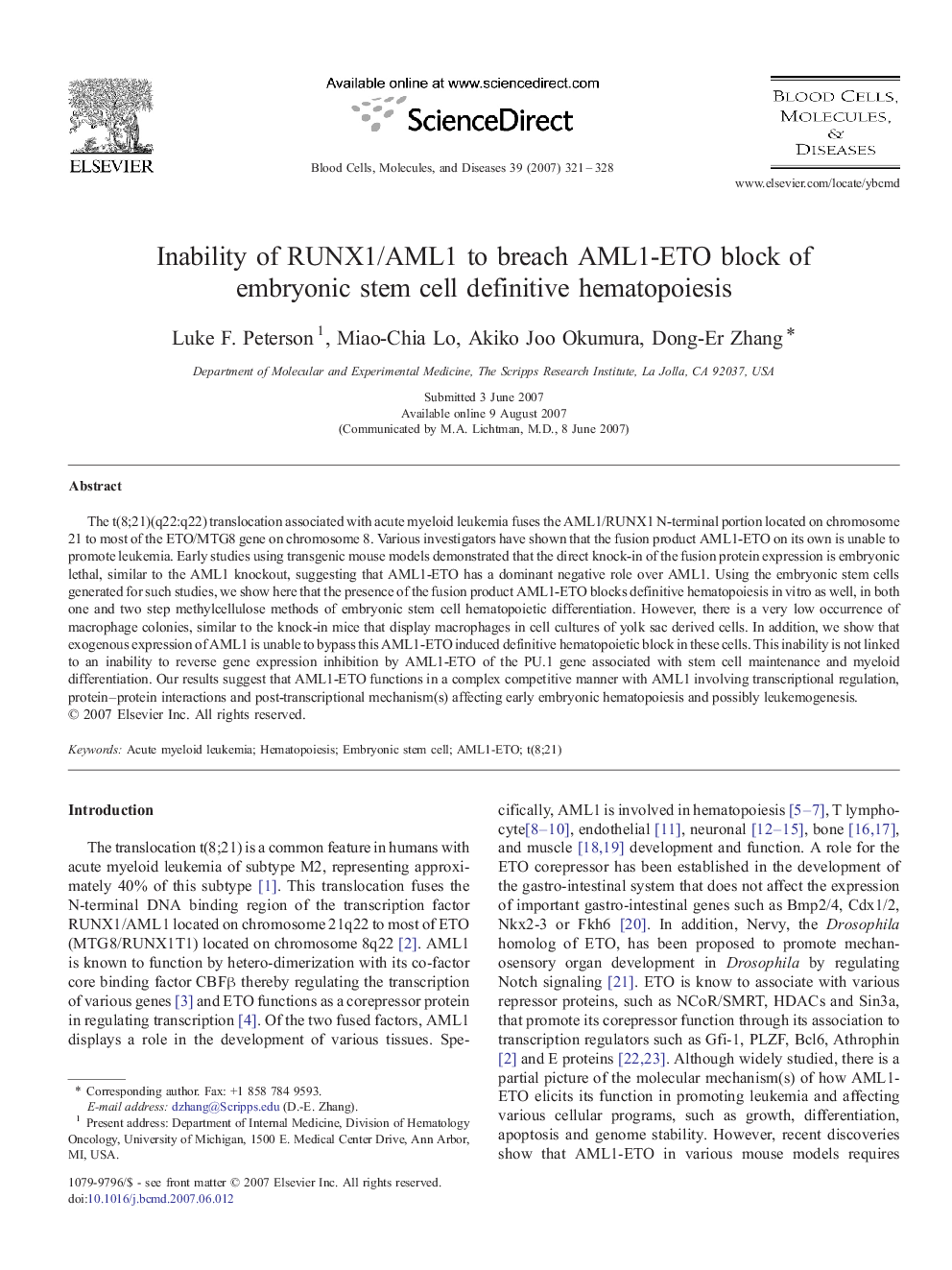| Article ID | Journal | Published Year | Pages | File Type |
|---|---|---|---|---|
| 2827962 | Blood Cells, Molecules, and Diseases | 2007 | 8 Pages |
Abstract
The t(8;21)(q22:q22) translocation associated with acute myeloid leukemia fuses the AML1/RUNX1 N-terminal portion located on chromosome 21 to most of the ETO/MTG8 gene on chromosome 8. Various investigators have shown that the fusion product AML1-ETO on its own is unable to promote leukemia. Early studies using transgenic mouse models demonstrated that the direct knock-in of the fusion protein expression is embryonic lethal, similar to the AML1 knockout, suggesting that AML1-ETO has a dominant negative role over AML1. Using the embryonic stem cells generated for such studies, we show here that the presence of the fusion product AML1-ETO blocks definitive hematopoiesis in vitro as well, in both one and two step methylcellulose methods of embryonic stem cell hematopoietic differentiation. However, there is a very low occurrence of macrophage colonies, similar to the knock-in mice that display macrophages in cell cultures of yolk sac derived cells. In addition, we show that exogenous expression of AML1 is unable to bypass this AML1-ETO induced definitive hematopoietic block in these cells. This inability is not linked to an inability to reverse gene expression inhibition by AML1-ETO of the PU.1 gene associated with stem cell maintenance and myeloid differentiation. Our results suggest that AML1-ETO functions in a complex competitive manner with AML1 involving transcriptional regulation, protein-protein interactions and post-transcriptional mechanism(s) affecting early embryonic hematopoiesis and possibly leukemogenesis.
Related Topics
Life Sciences
Biochemistry, Genetics and Molecular Biology
Molecular Biology
Authors
Luke F. Peterson, Miao-Chia Lo, Akiko Joo Okumura, Dong-Er Zhang,
